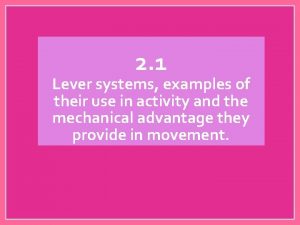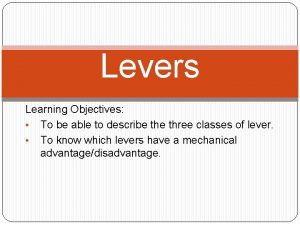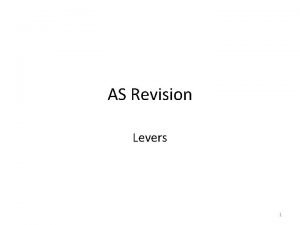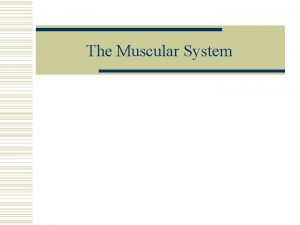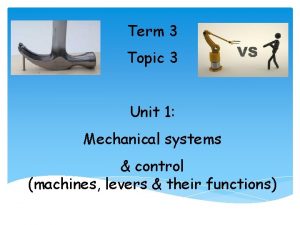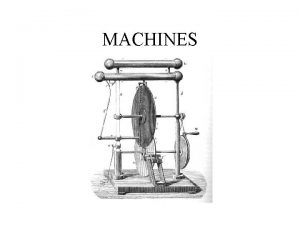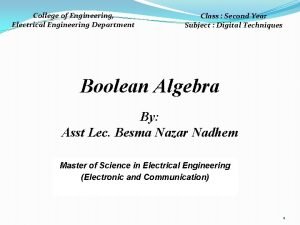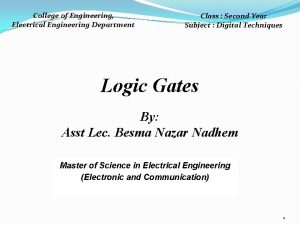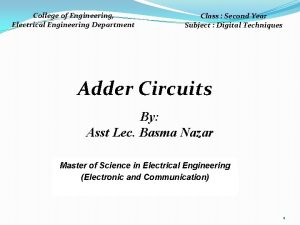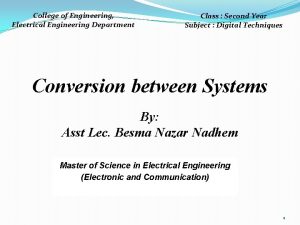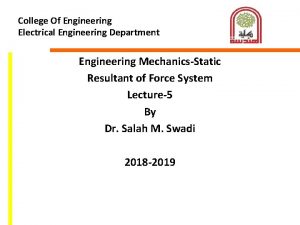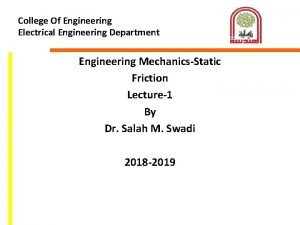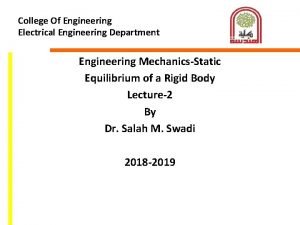College of Engineering Electrical Engineering Department Class Second











- Slides: 11

College of Engineering, Electrical Engineering Department Class : Second Year Subject : Digital Techniques Arithmetic Operation By: Asst Lec. Besma Nazar Nadhem Master of Science in Electrical Engineering (Electronic and Communication) 1

Arithmetic operations �Basic arithmetic operations include addition, subtraction, multiplication and division. �Basic Rules of Addition: 1. Binary Addition: �the basic rules of binary addition as follows: 1. 0 + 0 = 0. 2. 0 + 1 = 1. 3. 1 + 0 = 1. 4. 1 + 1 = 0 with a carry of ‘ 1’ to the next more significant bit. 5. 1 + 1 = 1 with a carry of ‘ 1’ to the next more significant bit.

Example: Add the following binary number: a)11+11 b)11+111 Solution: a) 11 b)011 11+ 111 + 110 1010 2. Octal Addition: If the sum result >= 8 , subtract 8 and carry 1 Example: Add the following octal number: 57+432 057 432+ 511

3. Hexadecimal Addition: If the sum result >= 16 , subtract 16 and carry 1 Example: Add the following Hexadecimal number: 58+4 B 58 4 B+ A 3 Complement : Complement are used in digital computer for simplifying the subtraction operation and for logical manipulation. There are two types of complement for each base system the r’s and (r-1)’ complement.

1. Binary Number Complement In binary number system we have the 1’s and 2’s complement the 1’s is obtained by replacing 0 s with 1 s and 1 s with 0 s. 2’s complement = 1’s complement +1. Example : Find the 1’s and 2’s complement of the following number : 1011000. Solution : 1’s comp. =0100111 ; 2’s =0100111+1=0101000 2. Decimal Number Complement In decimal number system we have the 9’s and 10’s complement the 9’s is obtained by subtracting each digit from 9 10’s complement = 9’s complement +1.

Example : Find the 9’s and 10’s complement of the following number : 2496. Solution : 9’s comp. = 9999 -2496 = 7503; 10’s =7503+1=7504 3. Octal Number Complement: In octal number system we have the 7’s and 8’s complement the 7’s is obtained by subtracting each digit from 7 8’s complement = 7’s complement +1. Example : Find the 7’s and 8’s complement of the following number : 562. Solution : 7’s comp. = 777 - 562 = 215; 8’s =215+1=216

4. Hexadecimal Number Complement: In hexadecimal number system we have the 15’s and 16’s complement the 15’s is obtained by subtracting each digit from 15 16’s complement = 15’s complement +1. Example : Find the 15’s and 16’s complement of the following number : 3 BF. Solution : 15’s comp. = 15 15 15 – 3 B F = C 4 0; 16’s =C 4 0+1=C 4 1

�Subtraction with Complements The efficient method for subtraction is used complement. The subtraction of two n-digit numbers M-N can be : 1 - If use (r-1)’s complement [1’s 9’s 7’s 15’s]: a. If the sum produce an end carry which can be added to the sum. b. If the sum does not produce an end carry take the (r-1)’s comp. of the sum and place – sign. 2 - If use (r)’s complement [2’s 10’s 8’s 16’s]: a. If the sum produce an end carry which can be discarded. b. If the sum does not produce an end carry take the (r)’s comp. of the sum and place – sign.

Example : Subtract the following binary number : a) 1010100 -1000011 b)1000011 -1010100 Solution : 1)Using 1’s comp. 2)Using 2’s comp. a)1010100 b)1000011 a)1010100 b) 1000011 - 1010100 - 1000011 - 1010100 1000011 0111100+ 0101011+ 0111101+ 0101100+ 10010000 1101110 10010000 1101111 1+ 1’s=0010001 2’s=0010001 -(0010001) discarded -(0010001)

Example : Subtract the following decimal number : 72532 -3250 Solution: 1)Using 9’s comp. 2)Using 10’s comp. 72532 72532 03250 - 0325072532 72532 96749+ 96750 169281 169282 1+ 69282 discarded Example : Subtract the following octal number : 256 -341 Solution : 1)Using 7’s comp. 2)Using 8’s comp. 256 256 341 - 341256 256 436 437

714 715 7’s comp. =063 8’s comp. = 063 -(63) –(63) Example : Subtract the following hexadecimal number : 592 -3 A 5 Solution : 1)Using 15’s comp. 2) Using 16’s comp. 592 592 3 A 5 3 A 5 592 592 C 5 A C 5 B 11 EC 11 ED 1+ 1 ED discarded
 Electrical engineering department
Electrical engineering department Tum department of electrical and computer engineering
Tum department of electrical and computer engineering Ucla systems engineering
Ucla systems engineering 186 282 miles per second into meters per second
186 282 miles per second into meters per second Resin cast potential transformer
Resin cast potential transformer Pasadena city college police department
Pasadena city college police department Second class lever sporting example
Second class lever sporting example Advantages and disadvantages of second class levers
Advantages and disadvantages of second class levers Disadvantages of second class levers
Disadvantages of second class levers Ischial tiberosity
Ischial tiberosity Linked second class levers
Linked second class levers Examples of second class levers
Examples of second class levers






